Kitchens with a sink in the corner: pros and cons, examples in the interior
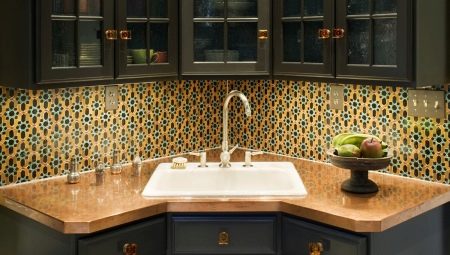
Any kitchen requires the installation of a large number of a wide variety of items: furniture, sinks, refrigerator, dining table, stove. Unfortunately, not every area can accommodate everything you need. For this reason, designers often go for some tricks: for example, they install corner sinks. In this way, you can use the available space as ergonomically as possible.
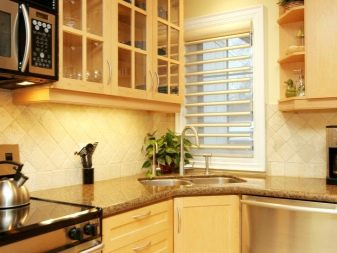
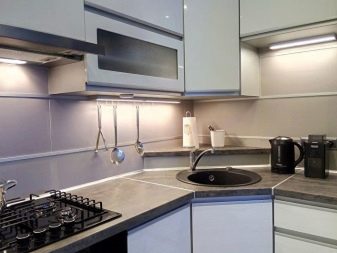
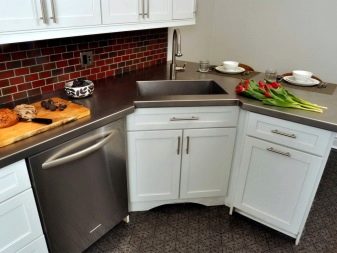

Advantages and disadvantages
A corner sink is considered one of the most rational ways to arrange a room. In most cases, it becomes part of an L-shaped or L-shaped kitchen. This layout option is most in demand, especially in small-sized premises, since it allows you to use every meter of free space.
Such a sink also looks harmonious in a studio apartment, as well as in cases where the kitchen area is combined with the dining room or living room.
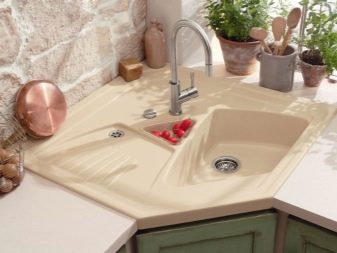
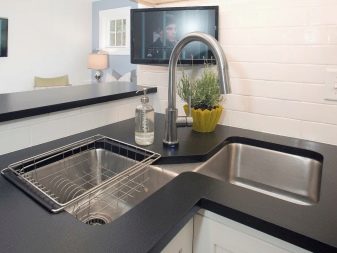
The pluses of placing a sink in the corner of the kitchen include several factors.
- Possibility to install a washing module, refrigerator and stove in accordance with the triangle rule at an equidistant distance from each other. This solution saves the housewives' time and effort: they always have everything they need at hand for work, so it will be much easier, faster and more comfortable to cook.
- The corner sink allows efficient use of the space underneath. For example, you can place water filters, a water heater or an organic shredder there. A quick tip: Instead of a regular trash can, place several separate containers under the sink for separate collection of waste.In this case, the use of practical and functional furniture with a corner sink will be a pretty good solution.
- The hygiene of corner sinks is considered an important aspect. The absence of joints in an area with high humidity significantly reduces the risk of mold, fungus and other pathogenic microorganisms.
- The sink in the corner always looks harmonious, does not create dissonance in the perception of the design of the room, it is a universal solution for any style.

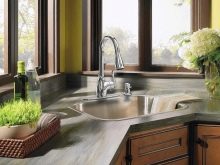
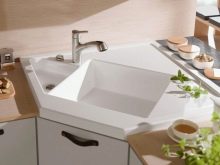
There are also disadvantages.
- So, a corner sink takes up more space than a straight one, so for those who rarely cook, a linear headset will be more than enough.
- Corner structures will not be the best choice for square and long narrow kitchens. In the first case, you will have to make a lot of unnecessary movements, moving from one functional object to another, and in the second, the place will be used non-ergonomically, since there is a high risk of overloading an already compact area.
- A set with a corner sink will be quite difficult to place in a kitchen of complex shapes, for example, in a room with niches, columns, ledges, a gas boiler, or simply with curved walls.
Please note that if you plan to move the sink to a different location relative to the pipeline outlets and drain, this will greatly increase the total cost of repairs.
In addition, there is a risk of leaks during operation.
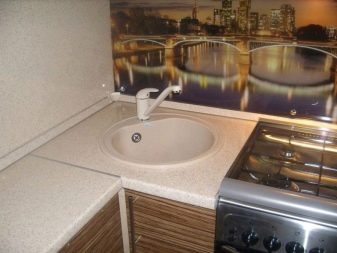
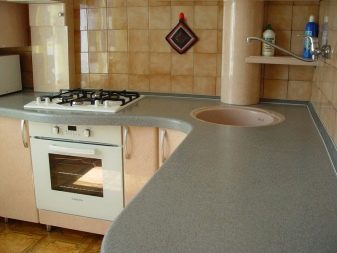
Types and layout of the kitchen
Interiors with criminal wash module are convenient in several cases:
- in small kitchens with an area of less than 10 m 2 - in such a situation, the headsets, as a rule, are supplemented with modular island and peninsular functional zones;
- if necessary, additional furnishing of a blank wall opposite the corner;
- for headsets used for placement in a combined room (kitchen + living room).
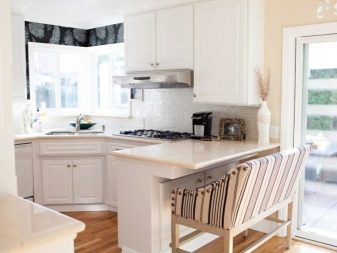
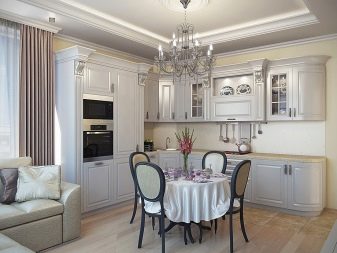
Accordingly, such sinks are optimal in 3 types of kitchens:
- L-shaped - such layouts are optimal for small kitchens, usually a sink in them is installed in the corner, and a stove and a refrigerator are placed on the right and left of it;
- with a peninsula - this completing is optimal for studio apartments, and also appropriate for a large rectangular area;
- with an island - this type of layout will undoubtedly be appreciated by the owners of spacious premises, as well as kitchens combined with a living room.
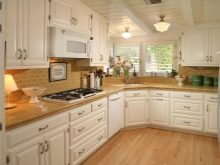

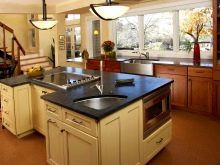
When installing a corner module with a bar, the hostess also receives a work surface, as well as a cozy place for a quick snack and get-togethers with friends.
The following options for the location of the corner sink are allowed:
- integration into a worktop niche - such a solution will allow you to achieve actual and visual space savings;
- the overhead method - in this case, the sink is combined with the cabinet and, in fact, itself becomes a countertop.
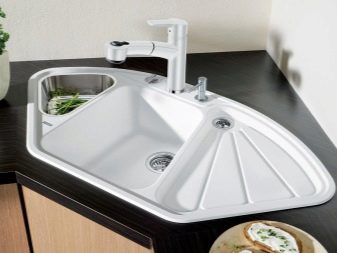

A corner sink usually includes a sink and a trapezium cabinet. The curbstone can be hollow, or it can be designed as a cabinet with a large number of pull-out compartments. In this case, special pull-out mechanisms are used to make it easier to find the necessary items: carousels and secret corners.
With the help of such systems, you can quickly and easily move the desired section towards you.


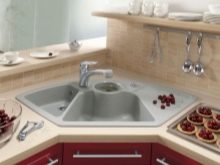
How to choose a sink?
Choosing a corner sink, there are several parameters to consider.
- First of all, it is important to determine what the weight load on the structure will be, that is, to roughly calculate how many dishes will fit in it at a time. If you are purchasing a sink for a large family, it makes sense to choose a spacious and easy-to-use model, otherwise the work will cause you a lot of discomfort.
- The selected sink must certainly withstand a wide variety of temperature conditions. The wider their range, the better, since food is often thawed in the sink, and boiling water from teapots is poured into it.
- The sink is not immune to heavy objects falling into it, so it won't be superfluous to make sure that the material used for its production is impact-resistant.
- A very important argument when buying a sink will be its reaction to acidic solutions and other chemicals. It is no secret that most of the detergents for cleaning sinks contain a certain percentage of acid, which can quickly corrode poor quality coatings.
- One of the main factors of choice is the ease of cleaning the surface.
- Pay special attention to the model with the optimal depth: 20–25 cm. With a deeper depth, you will have to constantly bend over to wash the dishes, and with a lower depth, splashes will scatter.



Sinks are made from different materials.
- Ceramics. They are beautiful, showy shells that can withstand a wide range of temperatures. They are fireproof and resistant to damage of low to medium strength: they cannot be scratched or bent. Accordingly, the cost of such products is quite high.
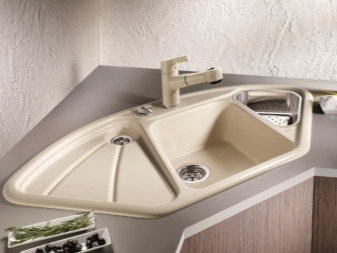

- Stainless steel. The most popular option for kitchen sinks. Such structures are extremely durable and practical, they are resistant to corrosion and, with good care, retain their aesthetic appearance for a long time. However, if heavy kitchen utensils are accidentally dropped, chips and cracks often appear on them, which significantly impairs the appearance of the products. The prices for such sinks are quite democratic, so they remain affordable for the vast majority of our compatriots.
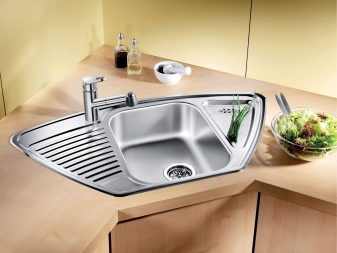
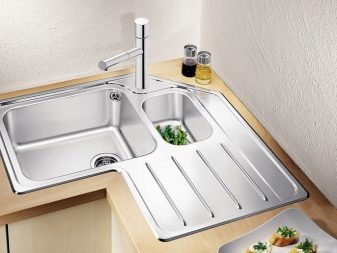
- Fake diamond. These sinks are considered to be the new generation sinks. They are environmentally friendly, exceptionally strong and durable
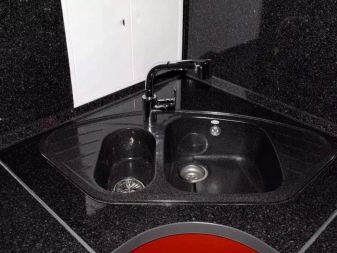
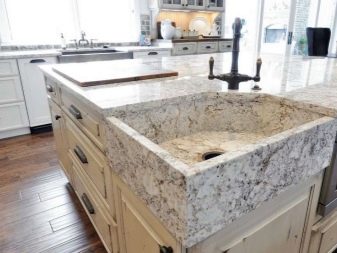
- Porcelain. While porcelain sinks are more commonly used in the bathroom, they can also be used in kitchens. There is no doubt that porcelain is the most beautiful and stylish material. Its airiness invariably attracts attention. However, porcelain is very fragile and can be easily damaged. In addition, the material does not withstand elevated temperatures.
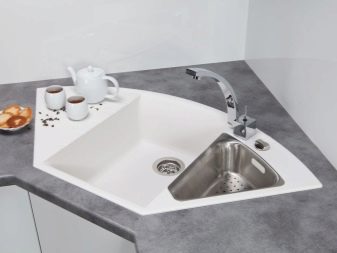
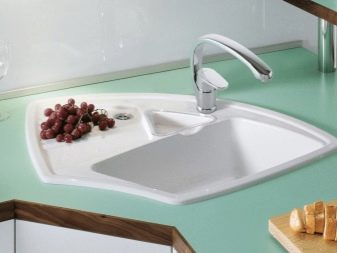
Style solutions
Sinks can be small, medium and large.
Small ones look harmonious in small kitchens. Large washbasins require space: such solutions are optimal only for large spaces.
As for the design style and its shape, the most common option is 2 containers of different sizes, placed at an angle to each other. They can be round, oval, square, or rectangular.

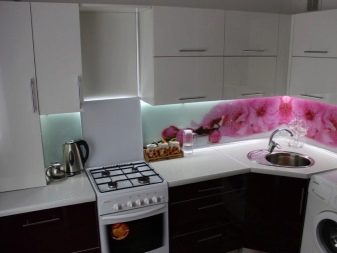

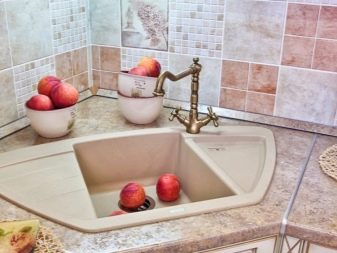
Rounded options are appropriate for classics, baroque and rococo, will be harmonious when decorating rooms in the direction of shabby chic and provence. But it should be noted that such models, despite their aesthetic appearance, can create noticeable discomfort: it is inconvenient to wash large objects in them, especially pans with elongated handles.
When decorating interiors in modern styles, it is better to give preference to rectangular as well as square models of corner sinks.
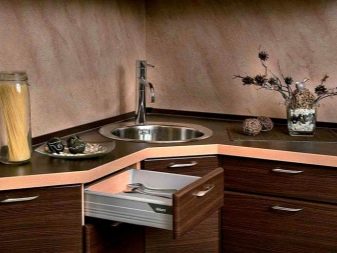
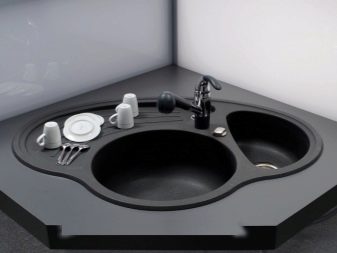
Successful examples in the interior
In conclusion, we present you with a selection of photos that clearly shows that using corner sinks in the kitchen is stylish, functional and ergonomic.



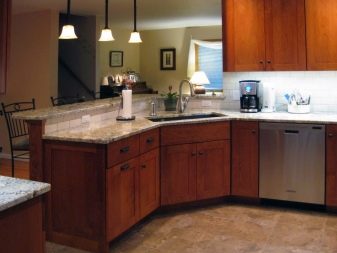
Tips for choosing a kitchen sink further in the video.








